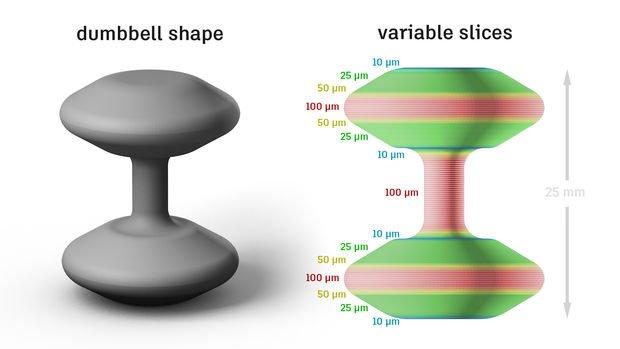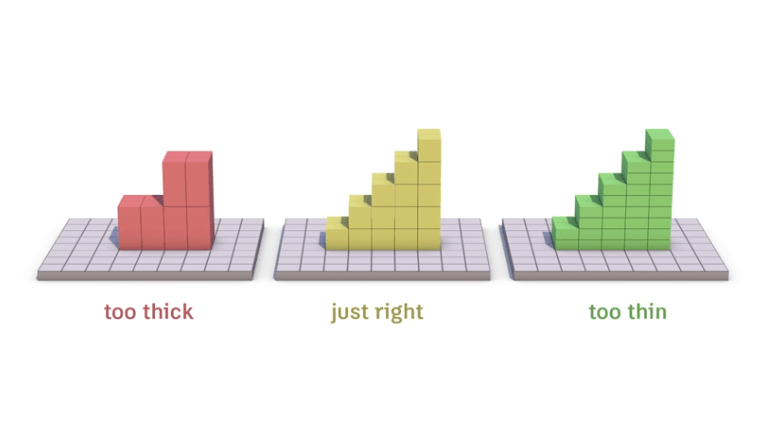 Autodesk wants you to have it all. If you’ve been 3D printing for a while, you’re probably aware that while you can achieve amazing results with 3D models, the slicing and the settings are where it’s at–along with getting some great tips from the experts! Last we checked in with Steve Kranz, we learned how to achieve sub-pixel resolution while 3D printing. Now, the Autodesk 3D printing veteran is helping us to achieve the results we want through slicing—and without waiting an eternity for high-resolution models to print.
Autodesk wants you to have it all. If you’ve been 3D printing for a while, you’re probably aware that while you can achieve amazing results with 3D models, the slicing and the settings are where it’s at–along with getting some great tips from the experts! Last we checked in with Steve Kranz, we learned how to achieve sub-pixel resolution while 3D printing. Now, the Autodesk 3D printing veteran is helping us to achieve the results we want through slicing—and without waiting an eternity for high-resolution models to print.
The question is not whether your 3D printer can print out high-resolution objects, but rather how long it will take. As Kranz points out, if you manipulate your slicing properly, you can have the best of all worlds.
“If your slices are thick, it prints fast but the individual layers are obvious,” says Kranz. “If you slice thin layers, the part looks nicer but it takes longer to print. What if you could have the best of both all in the same print?”
The new algorithm automatically slices .stl files and variable layer heights to optimize for both print speed and resolution. For any 3D printer, there is an optimum layer thickness (such as 50 microns for the Ember 3D printer). This is where striking the perfect balance for the best prints comes in. You don’t want to slice too thickly or too thin.
“Thicker slices are okay at the bottom; thinner slices are great at the top,” says Kranz.
 VariSlice is an open workflow for automatically slicing STL files at variable layer heights. With this program, Autodesk has created a way for you to print your vertical walls using the maximum layer height but with shallow angles (see the sphere example in the Instructables video below) being printed with low layer height.
VariSlice is an open workflow for automatically slicing STL files at variable layer heights. With this program, Autodesk has created a way for you to print your vertical walls using the maximum layer height but with shallow angles (see the sphere example in the Instructables video below) being printed with low layer height.
Taking each .stl file, the VariSlice program checks out the slopes of all triangles and then slices them at whatever thicknesses will allow for the best speed and resolution whether you are creating a cone, pyramid, or prism shape. The process gets more complex, however, when each of the sections of a shape (like a dome) has a different slope.
The unique algorithm, both open-source and free, offers automated slicing so that you don’t have to worry about overlapping, interleaving, or stair stepping. Speed can be varied for quality levels depending on the object and its geometry, but users will be able to look forward to printing that is up to ten times faster.
The key is that you will see mostly thicker layers, but the thinner layers are catching the ‘fine details.’ This is a great algorithm to use if you are experimenting with speed, resolution, and different results. It allows you to break the rules a little as you work to come up with the best slicing techniques for varying objects. Let us know what you come up with! Discuss in the VariSlice forum at 3DPB.com.
[Source: Hackaday]
Subscribe to Our Email Newsletter
Stay up-to-date on all the latest news from the 3D printing industry and receive information and offers from third party vendors.
You May Also Like
NSF Awards Kentucky $1M for Advanced Manufacturing
The National Science Foundation has awarded a $1 million grant to the University of Louisville for the Advancing Manufacturing and Building Construction Technologies (NSF AMT) project. This initiative is part...
3D Printing News Briefs, May 11, 2024: 3D Printed Stent, Tower, Sculptures, & More
We’re starting off with medical research in today’s 3D Printing News Briefs, as researchers in Korea used CT images and 3D printing to fabricate an educational simulator for a mastoidectomy....
3D Printing Unpeeled: Wind Turbines, Probiotics and Lenses
TPI Composites, ORNL and Ingersoll Rand are working to make wind turbine tooling segments that can be 18.3 meters long. These elements also include resistive wires that help keep the...
Tethon 3D Releases Cost-effective Bioprinter
Tethon 3D, known for its ceramic-loaded DLP materials, custom resins, and DLP 3D printers, has recently released a bioprinter. Vat polymerization printers like DLP systems have been widely used by...
































